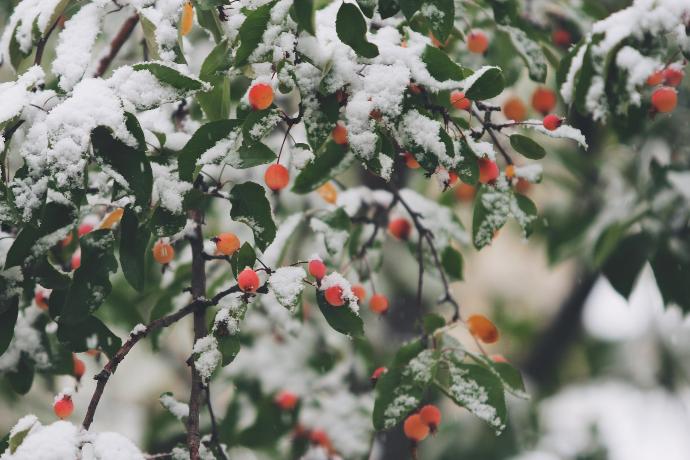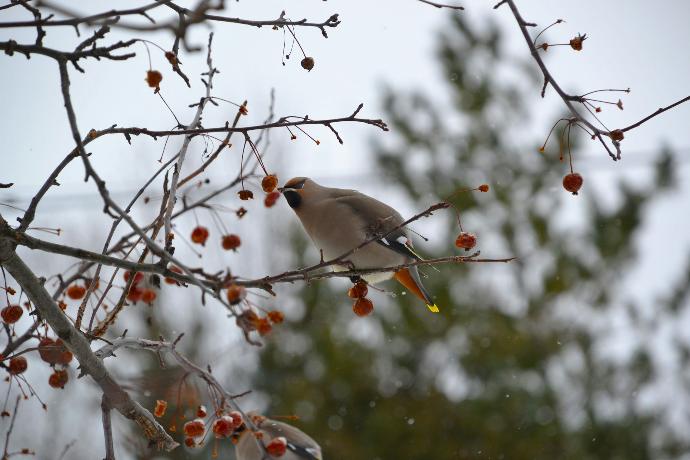Crabapple
Crabapple trees, 6-30 feet tall in Zones 4-8, exhibit moderate growth in well-drained soil and full sun. Known for their small and edible apples, crabapples are versatile in culinary uses.

Habit
Tree
Height
4-12 m
Growth
Moderate
Soil
Well-drained, loamy soil
Shade
Full Sun
Moisture
Moderate
Edible
Yes
Medicinal
Yes
Origin
Europe, Asia
Climatic Condition
Temperate
Temperature (°)
15-25°C
Humidity (%)
60-80%
Potting media
Loamy mix
Fertilizers
Balanced fertilizer
Watering
Regular watering; prefers moist, well-drained soil
Plant Weight
5-10 kg
Flowering Time
Spring
Soil Ph level
6.0 - 7.5
Water Ph level
6.0 - 7.5
Soil EC
1.2
Yield Per Plant
10-50 kg of fruit per tree
NPK ratio
10:10:10
life Span
Perennial
Health Benefits
Rich in antioxidants; supports digestive health.
Suggested Grow Media or Potting Mix ?
50% loamy soil, 30% compost, 20% sand
Suggested Fertigation/Fertilizers
Fertilize in early spring with a balanced, slow-release fertilizer.
Common Diseases and Remedies
Scab,Cedar-Hawthorn Rust
circular,olive black spots, leaf spots yellow to orange.
pruning,and spray neem oil
HEALTH BENEFITS
- Digestive Health: Supports gut health with fiber and pectin.
- Antioxidant-Rich: Helps combat oxidative stress and aging.
- Immune Booster: High in vitamin C and flavonoids.
What Is An Crab apple Tree?
Crabapple trees are small deciduous trees that produce small, hard fruits. Like other apple trees, it belongs to the genus Malus.
Crabapple trees are popular ornamental trees that bloom in the spring and produce brightly colored fruit in the fall. The fruit can be used to make jelly, applesauce, verjuice, or apple cider. Some crabapple trees are also used as rootstocks for domestic apples.

What Are The Different Types Of Crab apple Plants?
1. Prairie Fire
A popular variety that grows up to 20 feet tall and wide. It has dark pink fragrant flowers and decorative berries.
2. Profusion
A variety with deep pink-red flowers in spring and small red fruits in fall.
3. Dolgo
Tree reaching 15 to 20 feet in height. It is disease-resistant and cold-tolerant, making it a great addition to small gardens or large landscapes.
4. Luisa
A tree with curved branches covered in pale pink flowers in spring.

How do you care for your crabapple tree?
1. Location
Crabapple trees are native to North America and Asia and are commonly grown in gardens in Europe and Asia.
2. sunlight
Crabapple trees bloom and produce best in full sun, but will also tolerate light shade. They prefer warm summers and cold winters, and dislike hot weather.
3. Hydration
Provide newly planted crabapple trees with plenty of water during dry periods. After the first growing season, the tree does not require much additional watering, except in times of drought.
4. Soil
Crabapple trees prefer slightly acidic, nutrient-rich, moist, well-drained soil with an ideal pH of 5.5 to 6.5. They can adapt to many types of soil, but heavy, poorly drained clays do not tolerate this.
5. Nutrition
Mulch with well-rotted manure or compost in the spring.

6. Issues
The most common and serious disease that can cause premature defoliation, disfigurement, and weakness of trees.
Fungal diseases: These include Japanese apple rust, Japanese hawthorn rust, and scab.
Crabapple is used in Ayurvedic medicine to treat a variety of conditions such as gout, indigestion, inflammation, constipation, fever, and even cancer. Most crabapple trees bloom in shades of pink or white in the summer.

FAQs About Growing Crab apple
1.What is the medicinal use of crab apples?
In modern herbal medicine, Crab Apple is a cleansing tonic used to treat stomach and bowel disorders, diarrhoea, and perhaps to a lesser extent today, to treat scabies.
2.Are crab apples good for humans?
YES! Crab apples are perfectly safe to eat and though smaller in size, they contain all the healthy nutrients found in domesticated apples.
3.What is the difference between an apple and a crabapple?
The main difference between an apple and a crabapple is the size of the fruit.
4.What are the potential benefits of crab apples?
Crab apples may help fight cancer. Red crab apples especially have anticancer properties.
5.What are the nutrients in crab apples?
One cup of raw crab apples has 83.6 calories and contains low levels of iron, calcium, phosphorus, manganese, and magnesium

